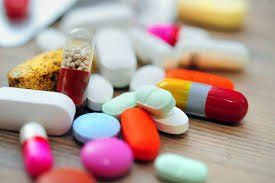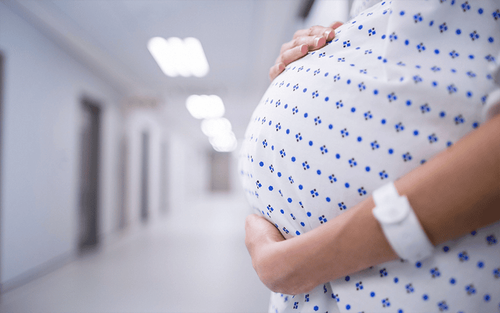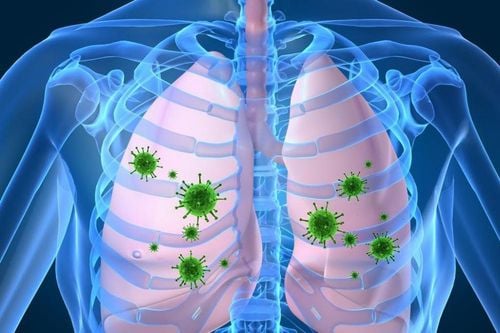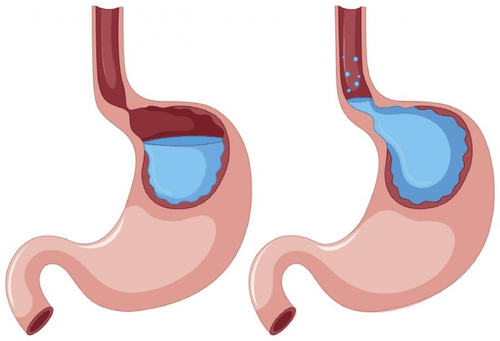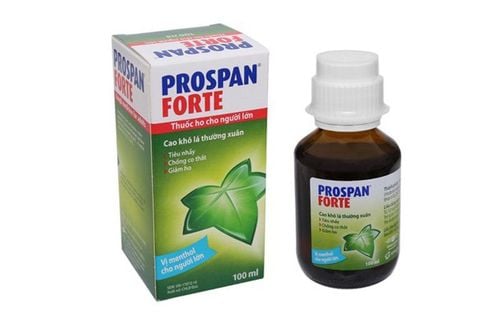This is an automatically translated article.
The word pneumonia means "lung infection." Due to the infection, the small airways in the lungs swell and produce more mucus. Mucus blocks the airways and reduces the amount of oxygen that can get into the body.
1. Learn about pneumonia
Most cases of pneumonia follow a viral upper respiratory tract infection. Usually, the viruses that cause these infections (respiratory syncytial virus, influenza, parainfluenza, adenovirus) spread to the chest and cause pneumonia. Pneumonia can also be caused by a bacterial infection. Some of these are spread from person to person through coughing or direct contact with the saliva or mucus of an infected person. Pneumonia most commonly occurs in the fall, winter, and early spring, when children spend more time indoors and in close contact with others.
2. Signs and Symptoms of Pneumonia in Toddlers
Pneumonia can strike at any time, but they usually appear in winter and spring, after a child has a cold or other upper respiratory infection.
Cough and fever are two of the main, most common symptoms in pneumonia. In addition, some other symptoms may include:
Fatigue, fever Vomiting Diarrhea Child poor appetite, loss of appetite Headache Muscle aches Shortness of breath or rapid breathing, irregular breathing Skin, lips or nails bluish or gray hands Children in this age group are often not able to describe to adults what they are experiencing, so parents need to pay close attention to unusual signs such as paleness, fatigue, lethargy or crying more than usual so that pneumonia can be detected at the earliest.

Trẻ có thể gặp tình trạng nôn mửa và nhiều triệu chứng khác kèm theo
3. Causes and risk factors of pneumonia in toddlers
Some children may be more at risk of pneumonia than others. Pneumonia is more common in:
Premature babies Children with asthma Children with other chronic diseases Children with weakened immune systems Children who are passive smokers Pneumonia is a general term used to describe infections that occur out in the lungs. These infections can be caused by many different types of bacteria or viruses and sometimes even fungi. For example, a baby can develop respiratory syncytial virus (RSV) pneumonia, and a newborn can also have a group B strep infection (GBS) acquired before and during birth. Older children can get pneumonia from other bacterial or viral infections.
3.1. Bacterial pneumonia Children with bacterial pneumonia often have symptoms such as a sudden high fever, rapid breathing, and a persistent, long-lasting cough. Children often lose their appetite and look very weak. In addition, children often have difficulty breathing, which is manifested by the rising and falling of the nose and chest when breathing, the pulse is also faster, and the lips or fingernails become paler. Other common symptoms include vomiting or diarrhea, while less common symptoms include abdominal pain or stiff neck.
Streptococcus pneumoniae (the bacteria that causes pneumococcal disease) is a common cause of bacterial pneumonia, but other bacteria such as Staphylococcus aureus (the bacteria that cause pneumonia) or mycoplasma bacteria are also present. can cause pneumonia in toddlers.
3.2. Viral pneumonia This type of pneumonia is often accompanied by cold-like symptoms that get worse and get worse over time. The child may have a high fever accompanied by a worsening cough, wheezing, and rapid, irregular breathing. The child may also experience weakness, vomiting accompanied by diarrhea.
Viral pneumonia is usually less severe than bacterial pneumonia and does not progress to disease. However, they can weaken a child's immune system and facilitate other bacterial infections.
Viruses that cause common pneumonia include:
Respiratory syncytial virus (RSV) Parainfluenza virus Adenovirus Influenza virus Human virus (HMPV)
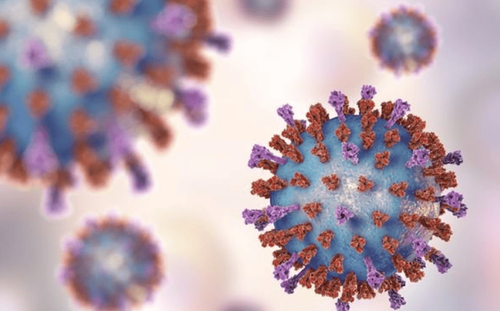
Virus hợp bào hô hấp (RSV) gây viêm phổi ở trẻ nhỏ
4. Diagnosing Pneumonia in Toddlers
During a physical examination of the baby to diagnose pneumonia, the doctors will follow a few steps:
Observe the child's breathing carefully Use a stethoscope to examine the baby's lungs The doctor will listen for sounds slowed breathing or other unusual noises. Because some of the air sacs in your baby's lungs fill with fluid when the lungs are inflamed, your baby will need to breathe quickly to get more oxygen. In cases where the doctor thinks pneumonia is the cause of the above symptoms, the child may:
Be ordered to have a chest X-ray Ask for blood to be tested and do a blood count Take fluid from the nose and pharynx, throat to check for certain viruses like RSV or the flu Use a pulse oximeter to make sure your baby is getting enough oxygen. An oximeter is a simple device clipped to a finger that measures the saturation of oxygen in the blood.
5. Treating Pneumonia in Toddlers
The treatment for pneumonia in a toddler will depend on the type of infection the child has.
5.1. Treating Bacterial Pneumonia in Toddlers First, your doctor will prescribe some antibiotics that are right for your baby. In cases where bacterial pneumonia needs to be treated in the hospital, your baby may be given intravenous fluids and antibiotics. Nurses can regularly aspirate nasopharyngeal fluid and monitor the baby's blood oxygen levels through the oximeter. For severe cases of pneumonia, the child may be fitted with an oxygen tube through the nose or a mask to make breathing easier.
5.2. Treatment of viral pneumonia in toddlers Treatment for viral pneumonia will likely be limited to rest and fluids because viral pneumonia does not respond to antibiotics. Usually, viral pneumonia in children only needs to be treated at home. While it's always important to get a diagnosis from a doctor if a child's parents suspect a child has pneumonia, there are some steps they can take to help their baby recover including:
Keep your baby hydrated. Drinking enough water is important to combat dehydration caused by rapid breathing and fever. Run a cool-mist humidifier to help clear your child's lungs and make it easier for him to breathe. Relieve pain. If the child is feverish and uncomfortable, parents can give the child the appropriate dose of acetaminophen or ibuprofen (if the child is 6 months or older). Certain cough suppressants are not recommended because coughing is the body's natural response to clearing mucus from an infection. 5.3. Recovering from pneumonia in toddlers Most uncomplicated pneumonia goes away within a week, although coughs may continue. If your child is given antibiotics for bacterial pneumonia, continue to give them for the duration of the treatment. Even if your child does start to get better within a few days, there is a chance the infection could return if the full course of antibiotics is not completed.
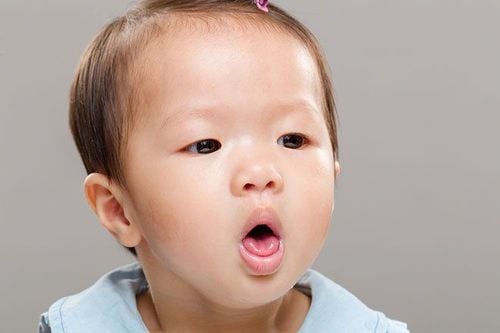
Giai đoạn hồi phục trẻ vẫn có thể còn tình trạng ho kéo dài
6. Pneumonia Prevention in Toddlers
To reduce the risk of pneumonia in children, parents should take some of the methods listed below:
Fully immunize children. Hib vaccine, diphtheria tetanus pertussis (DTaP) vaccine, measles mumps rubella (MMR) vaccine, influenza (for babies at least 6 months old), chickenpox, and pneumococcal vaccines can all help prevent pneumonia. . In case you have missed a shot, talk to your doctor so he can get advice on this. Practice good personal hygiene. Wash your hands often, both for children and parents, to prevent the spread of bacteria and viruses. Do not let children share cups and other personal items with other children in the same class. Regularly clean all places where germs can touch body parts such as phones, toys, doorknobs, refrigerator door handles.... Turn your home into a smoke-free home. medicine. If you want to smoke, prepare a separate space outside, to avoid letting the smoke affect your child. Studies have shown that children who are regularly exposed to secondhand smoke are more likely to get sick and more susceptible to certain infections such as pneumonia, upper respiratory tract infections in children, asthma and ear infections than children who are exposed to secondhand smoke. with other children. Parents should equip themselves with enough knowledge on how to recognize pneumonia in toddlers early to have prompt care and treatment to avoid possible serious complications. And when you see a child showing even the smallest symptoms of pneumonia, it is necessary to quickly take the child to a medical facility for timely diagnosis and treatment by doctors. In addition, it is advisable to follow a hygienic lifestyle, not to smoke, to cook in a room with young children, and to isolate children early from people with respiratory diseases to reduce the risk of spreading.
In addition, parents should also add some supporting foods containing lysine, essential micro-minerals and vitamins such as zinc, chromium, selenium, B vitamins,... The need for nutrients at the same time supports the immune system, enhances resistance, reduces the risk of diseases such as pneumonia, upper respiratory tract infection, bronchitis, flu.
Lysine is very necessary for the development of children, Lysine promotes the production of digestive enzymes to stimulate children to eat better and digest easily and effectively, increase food metabolism, maximize absorption of nutrients. food nutrition. Increasing lysine for babies helps the body create antibodies, develop resistance to help reduce cough and thin phlegm in children.
Parents can learn more:
Why do you need to supplement Lysine for your baby?
Please regularly visit Vinmec.com website and update useful information to take care of your baby and family.
Reference source: Babycenter.com; Kidshealth.org




